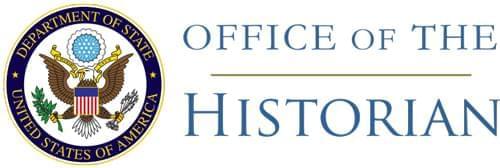574.D1 Subcommittee 2/16
Report of Subcommittee on the EU–F–GB–I Radio Protocol
To the Honorable Norman H.
Davis,
President of the Preliminary
Conference on Electrical Communications.
The Sub-Committee on the EU–F–GB–I Radio Protocol begs to report that it has held fifteen meetings and that it has considered the EU–F–GB–I Radio Protocol of August 25, 1919, together with the modifications and comments put forward by the American Committee appointed by the Secretary of Commerce. It has also considered portions of the Draft Regulations attached to the Draft of the Combined Telegraph Convention and its attached appendices submitted by the British Delegation. It appointed a sub-subcommittee to consider wave lengths and their allocation. This sub-sub-committee held sixteen meetings. The recommendations of this sub-sub-committee have been adopted by the sub-committee No. 2.29
Certain of the recommendations of the sub-committee have been embodied in the revised draft convention and regulations annexed to the report of the sub-committee on Universal Communications Union and Telegraph and Radio Telegraph Conventions. These recommendations deal with the following:
[Here follows a list of twenty-seven recommendations.]
The sub-committee recommends that the annexed appendices30 be attached to the revised draft convention and regulations, namely:
- Appendix I. General principles governing the regulation of fixed stations using waves greater than 3050 metres.
- Appendix II. Classification of radio waves and distribution of wave lengths to different services.
The sub-committee recommends that the following paragraph be inserted in the draft convention:
[Here follows text of paragraph printed as article 11 of the draft convention, page 154.]
The sub-committee makes the following recommendations:
“The international body which is concerned with the ‘safety of life at sea’ to determine what ships are to be required to carry radio apparatus and the minimum hours of watch which are to be kept. Likewise, this international body should determine the obligations in regard to emergency sets on board ships.
[Page 166]“The international body which is concerned with aerial navigation to determine which aircraft are to be required to carry radio apparatus, and the minimum hours of watch which are to be kept.
“The question of meteorological telegrams will be discussed by the International Meteorological Commission, which met in London commencing at the end of November, 1920. It seems, therefore, that it is the duty of this meteorological Commission to organize a special service regarding meteorological telegrams; and consequently it seems unnecessary for the Preliminary International Conference on Electrical Communications to dwell on this subject except in connection with the wave-lengths and financially with rates.
“The Preliminary International Conference on Electrical Communications express the wish that the Scientific International Organization, which is dealing with time signals, be caused to prepare, as soon as possible, a table, showing automatic time signals and a table showing time signals made by hand, which should be accepted by the nations so as to facilitate the task of mariners who are sailing in all parts of the world.”
The sub-committee’s recommendations with regard to the formation of a provisional technical committee are annexed and marked “A.”
The sub-committee’s recommendations with regard to the distribution of waves to existing stations are annexed and marked “B.”33
The recommendations contained in “A” and “B” are for the information of the Five Principal Allied and Associated Powers only.
It should be understood that in connection with the recommendations made by the sub-committee on the EU–F–GB–I Protocol that the powers which have taken part in the present conference reserve the right to propose further modifications.
Chairman
- In the numerical designation of subcommittees by the Conference, the subcommittee on the EU–F–GB–I Radio Protocol was no. 2.↩
- Appendices not printed. See Universal Electrical Communications Union, Draft of Convention and Regulations (Washington, Government Printing Office, 1921).↩
- Annex B not printed.↩
- The bracketed insertions, paragraphs 4 and 5, inadvertently omitted from the English text, have been supplied from the French text.↩
